You might think this is a strong opening statement but it is our opinion and we will stick to it until we find somewhere even better! We have travelled a lot and been to some of the most astonishing and beautiful landscapes throughout the world – recently when we were in Yosemite, we thought that was astonishing and could not be bettered but we were wrong.
We have no descriptive words (which have not already been used for other beautiful places) left for Glacier Park. Therefore please invent your own and apply them to this Park, it truly is: astonishingly beautiful; grand; magnificent; peaceful; awe inspiring and many many other words.
As US parks go, it is not the largest in the country but it is larger than Yosemite. At just over 1 million acres (Yosemite 750,000), it attracts around 2 million visitors a year (Yosemite 4 million) and crosses the border into Canada. It was established in 1932 and (I am delighted to say), Rotary played a significant role in its establishment.
Most visitors approach from the western side and get to the middle of the park along the “Going to the Sun” road. Our plan is to go to the top of the road and do one of the walks on offer on our first day and on our second day, ride around the whole park on a “Red Bus”.
Our van is too long, too wide and too high to be allowed to drive more than a few miles into the park and therefore on our first day we used the free shuttle service provided by the National Parks Service (NPS) and parked Mac in the large transit centre near to the park entrance. As is always the case with the NPS, the rangers we met were helpful, cheerful, efficient, delighted to talk to you, patient and many other things as well. We have never met an NPS ranger whom we have not felt was anything but helpful - the NPS is a great American institution and the fees we have paid to use the parks have been well worth it..
There was a Ranger waiting at the Apgar Transit Centre to
ensure we were fully briefed about what we were planning on doing and then to ensure we got on the first available bus to our destination (Logan Pass) which was some 30
miles away. And whilst we were waiting, he seemed to feel it was his duty to tell us jokes and to brief us about the park. We were lucky today because there were sufficient people waiting to go to the top for them to provide a small express bus to the top (as against a larger but halfway and then a change to a smaller bus to go to the top).
The road to the top seems to hang on to the side of the mountains and the drop on the right hand side of the road is so shear that they strongly advise anyone who has a fear of heights to sit on the left hand side of the bus so that they do not suffer from vertigo (or die of fright).
Above is the view from half way up the route looking towards the west and it shows the road we started out on just to the left of the river.
A lot of the forest still shows signs of the last major forest fire they had here in 2003 and whilst here we were taught how to distinguish between bare patches due to forest fire and bare patches due to avalanche.
Towards the top of the road is the “"Weeping Wall” where water streams out of the rock face from a glacier on the other side of the mountain. Many coach drivers like to drive as close to it as possible to that any passenger sitting near an open window experiences glacial water!
At the top of the road (6646 ft high) is the Logans Pass Visitors Centre and usually it is full from early on in the day. We do not have to worry of course because we arrived by bus.
We are planning to do the walk to “Hidden Lake” which is only about 3 miles each way but to get there, you first walk uphill from 6646 ft to 7140 ft and then descend to 6375 ft (and of course have to climb then descend the same heights on the reverse trip).
Snow in this area lasts until the early summer and the road we have just driven up was only reopened a few weeks ago. Hence there is a lot of snow around. The walk starts
across alpine like meadows upon which wild flowers are growing in profusion
and the views all around are magnificent.
We soon however hit the snow fields and the going gets much harder
We are well equipped with walking boots, walking poles, wind proof jackets etc but some we meet are less well
equipped. It never ceases to amaze us how people will set out for a walk in the hot sun (or cold winds) dressed and equipped totally inappropriately. We even met some people who having decided that their flip-flops would not work in the snow, were walking across the snow fields in bare feet (they were also wearing only tank tops and were obviously suffering with the cold and wind).
As we trudge across the snow, some mountain sheep cross ahead of us
and climb up the rocks with significant agility.
We meet them again later on – it seems obvious that they have grown used to getting titbits from walkers
After about 90 minutes walking, we get to the top and the view of Hidden Lake is superb.
The lake is in fact much longer than this picture shows and when we get back to the UK, we will stitch a couple of pictures together to show the full panorama. Everyone who sits at the spot from where this picture is taken agrees that the trudge up through the snow is well worth the effort when this view appears in front of you.
Unfortunately (although really we decide it is luckily) the path further on is closed because “Bear Danger”. Actually meeting a bear is not that common but we are now certain from all of the briefing, advice and warnings we have been given that it can have a very unpredictable outcome.
So we get to turn around after a picnic lunch (not shared with the wildlife) and descend to Logans Pass and see the views which were behind us on the way up.
There are valleys
and mountains in all directions go as far back as you can see.
The Red Bus “Going to the Sun Circle Tour”
On our second day here, we are driving around the whole park on one of the famous Red Buses.
They seat a maximum of 17 passengers and are a joy to ride in.
Built by the White Motor Company of Cleveland Ohio between 1933 and 1939, 33 of the original white buses have been refurbished for use in the park. The drivers of the buses are called “Jammers” because the original buses had no clutch and therefore changing gear required double declutching and jamming into the next gear.
You start off riding with the top on and then when the scenery gets
really good, the top is rolled back and you can stand up to tale pictures whenever the bus stops.
The advantage of the Red Bus (as compared to the park bus) is that it stops frequently for us to appreciate the landscape – such as this view at the western end of Lake McDonald showing numerous peaks on the horizon (l-r: Mt Vaught; Garden Wall; Mt Cannon; Mt Brown; Little Matterhorn; Snyder Ridge; Edwards Mountain; Gunsight Mountain).
We also stop at some of the lodges which were built to create business for the railway
such as Lake McDonald Lodge (above)
and Isaac Walton Lodge which is built in a rail yard.
The interior of this lodge is full of memorabilia dating from the early days of the railroad
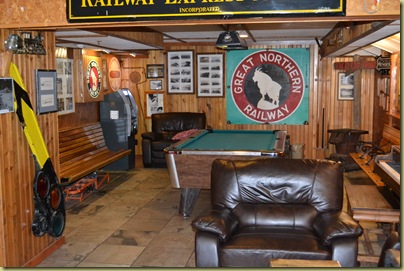
 and hotel rooms which are built into converted railcars
and hotel rooms which are built into converted railcars
costing considerably more per night than an RV pitch!
The McDonald Falls unsurprisingly feed Lake McDonald
and the NPS have created a lookout over the falls
which enable you to get very close to the power of the water.
Of interest to us (but not to most other people on the bus) are some fossilised strombolites by the side of the road – we last saw some living ones of these in Australia and they are the reason that we have oxygen in our atmosphere. They are the oldest living thing on planet Earth.
This time we are able to stop on the way up to take a picture of the valley looking westwards
and then of the road clinging to the side of the hillside
in some places going over arches constructed to hold it on to the hillside.
The path the road takes up the mountains is a tribute to road engineering.
We think that the valley view on the eastwards side of Logans Pass is truly one of the best views in the world
and the mountains are still as good on the other side,
Towards the bottom of the road is Saint Mary Lake and in the middle is the small Wild Goose Island
and a couple of tired travellers.
The eastern side of the park also shows the effects of
forest fire, this one dating from 2006. The road trip around the park is well worth doing and we enjoyed this long and tiring excursion.

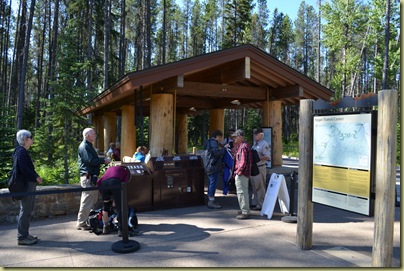
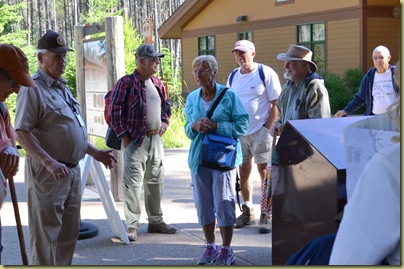
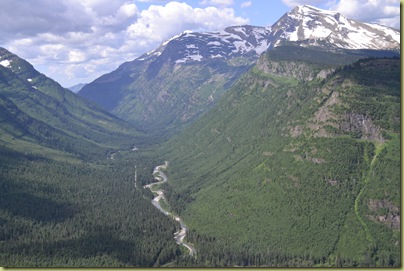
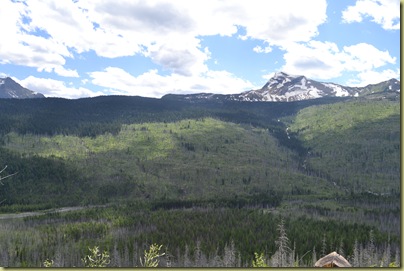
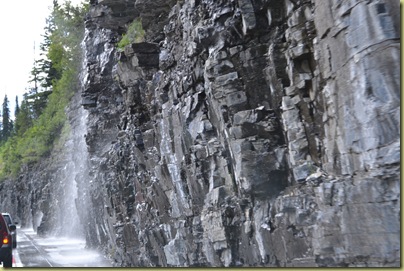

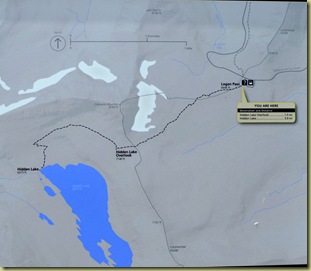

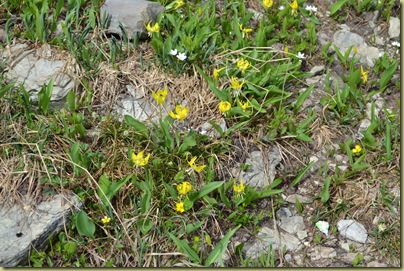
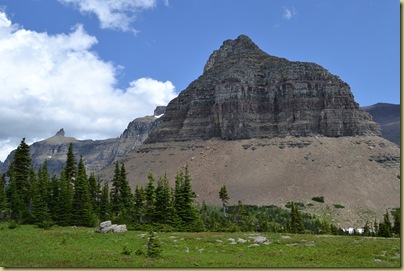
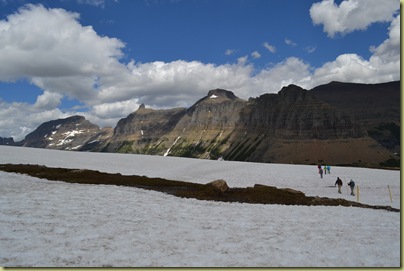
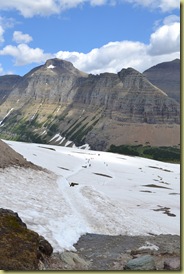
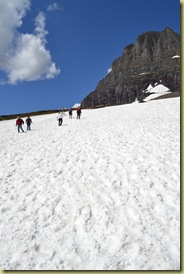
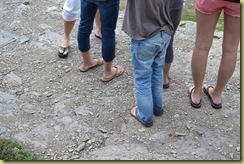
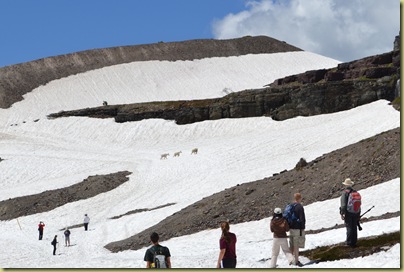
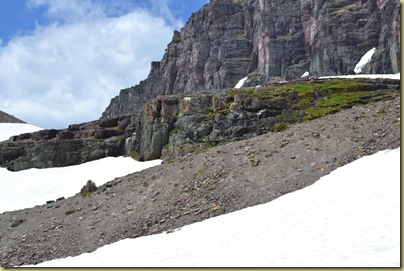
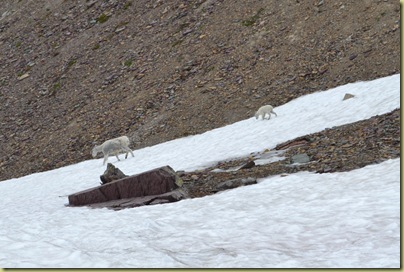
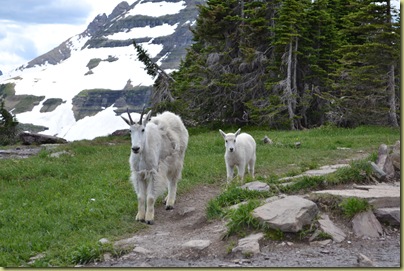
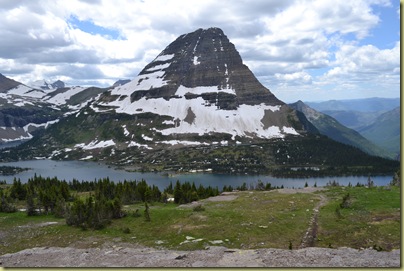
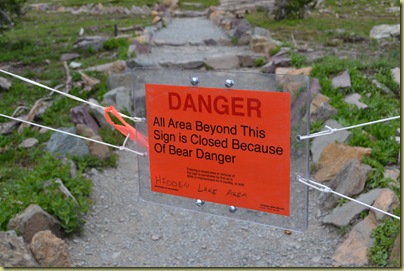
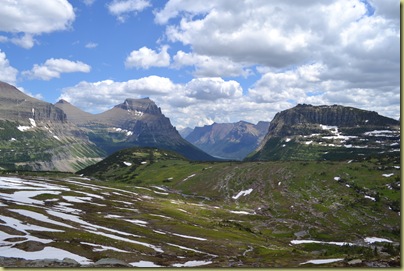
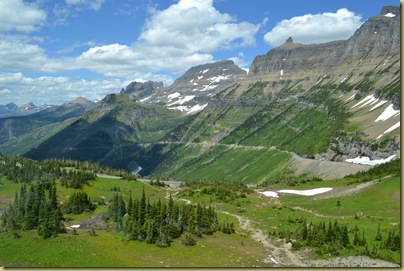
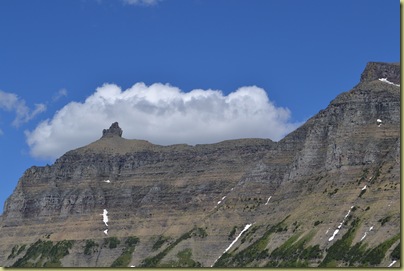
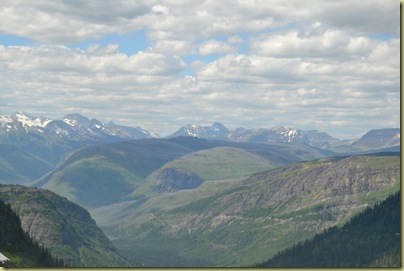
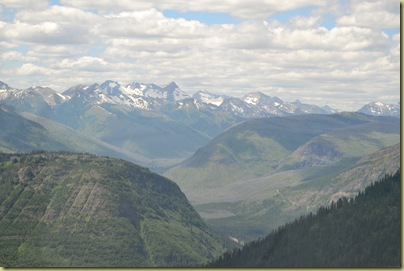

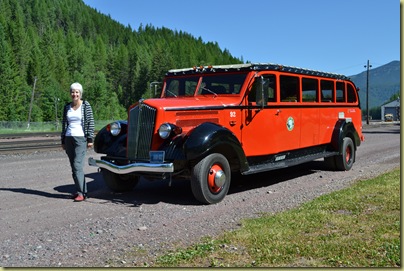
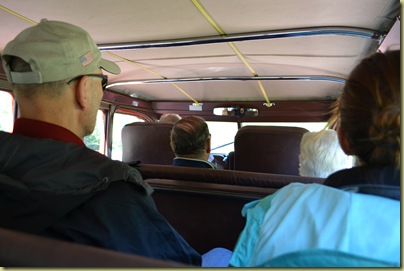
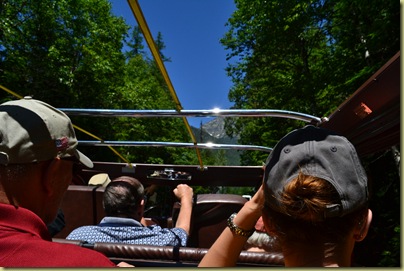
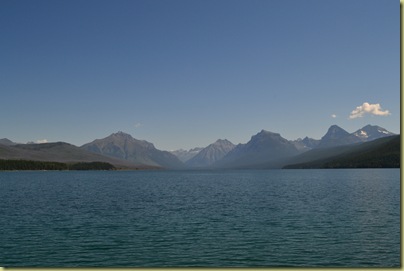

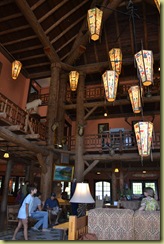
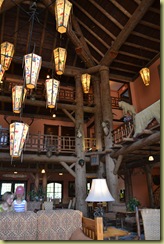
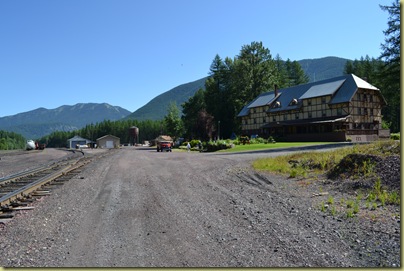
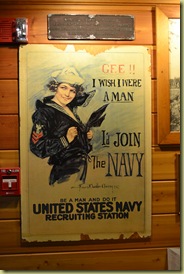

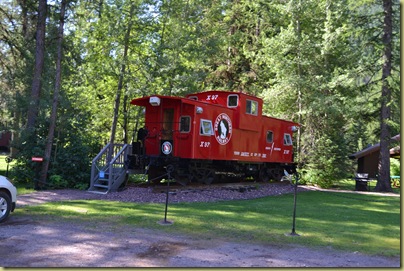
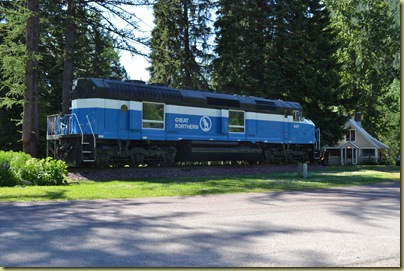
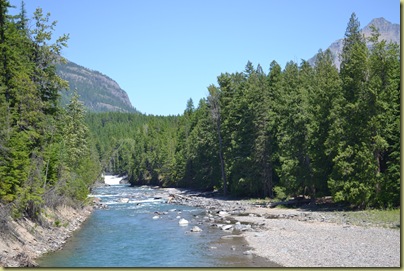
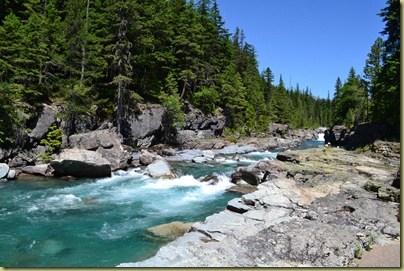
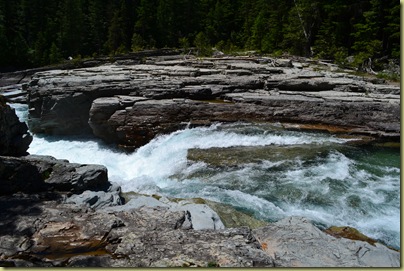

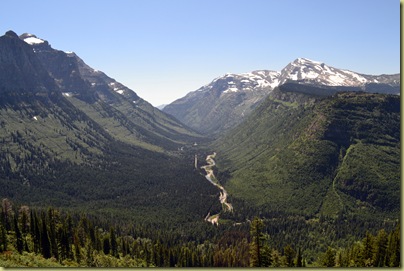
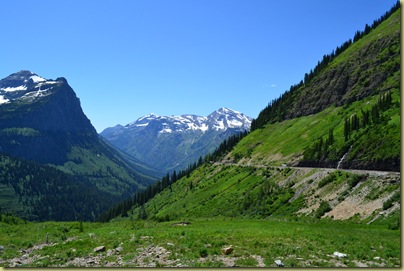
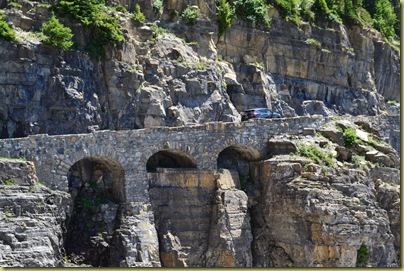
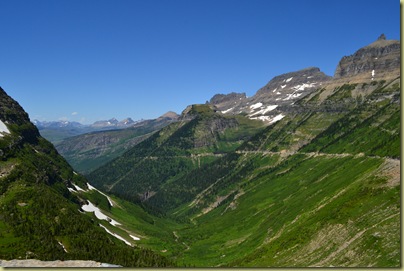
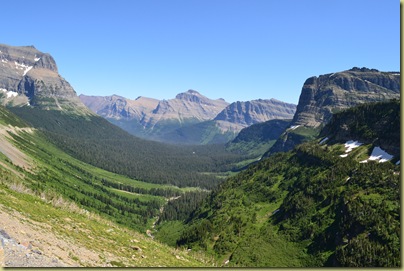
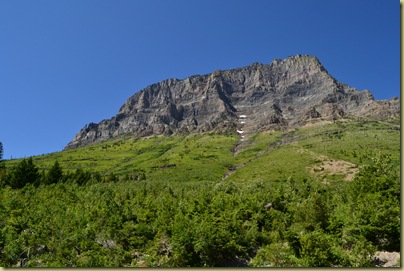
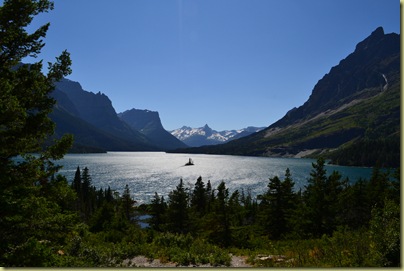
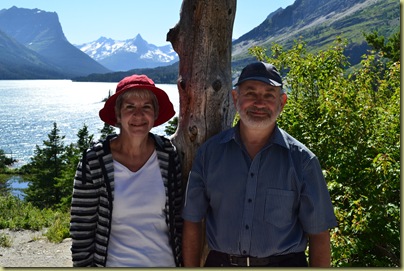
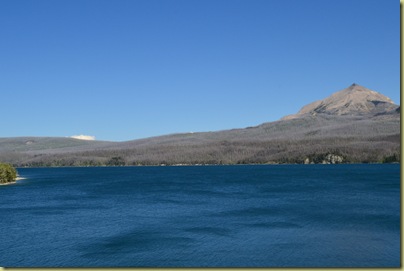
No comments:
Post a Comment